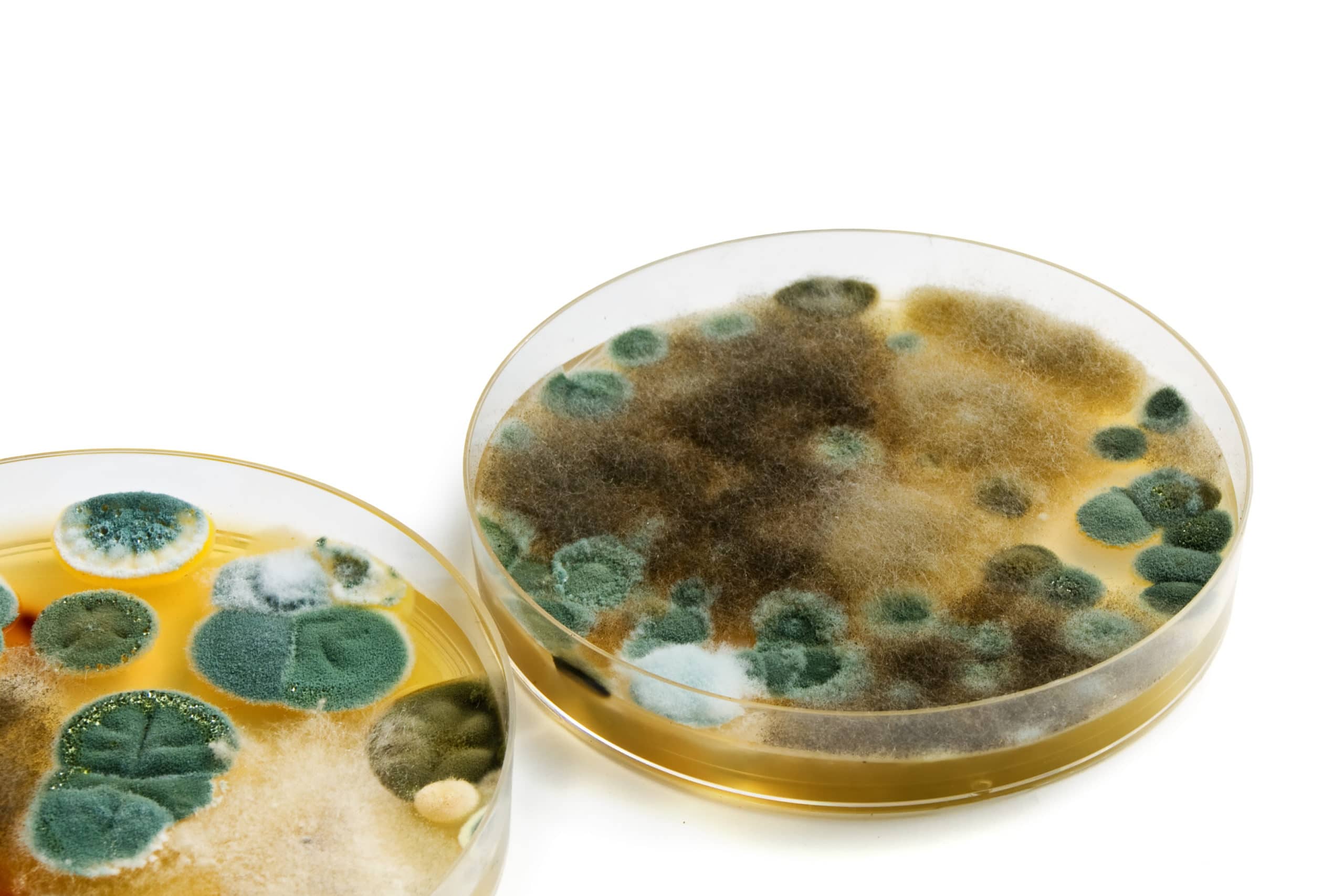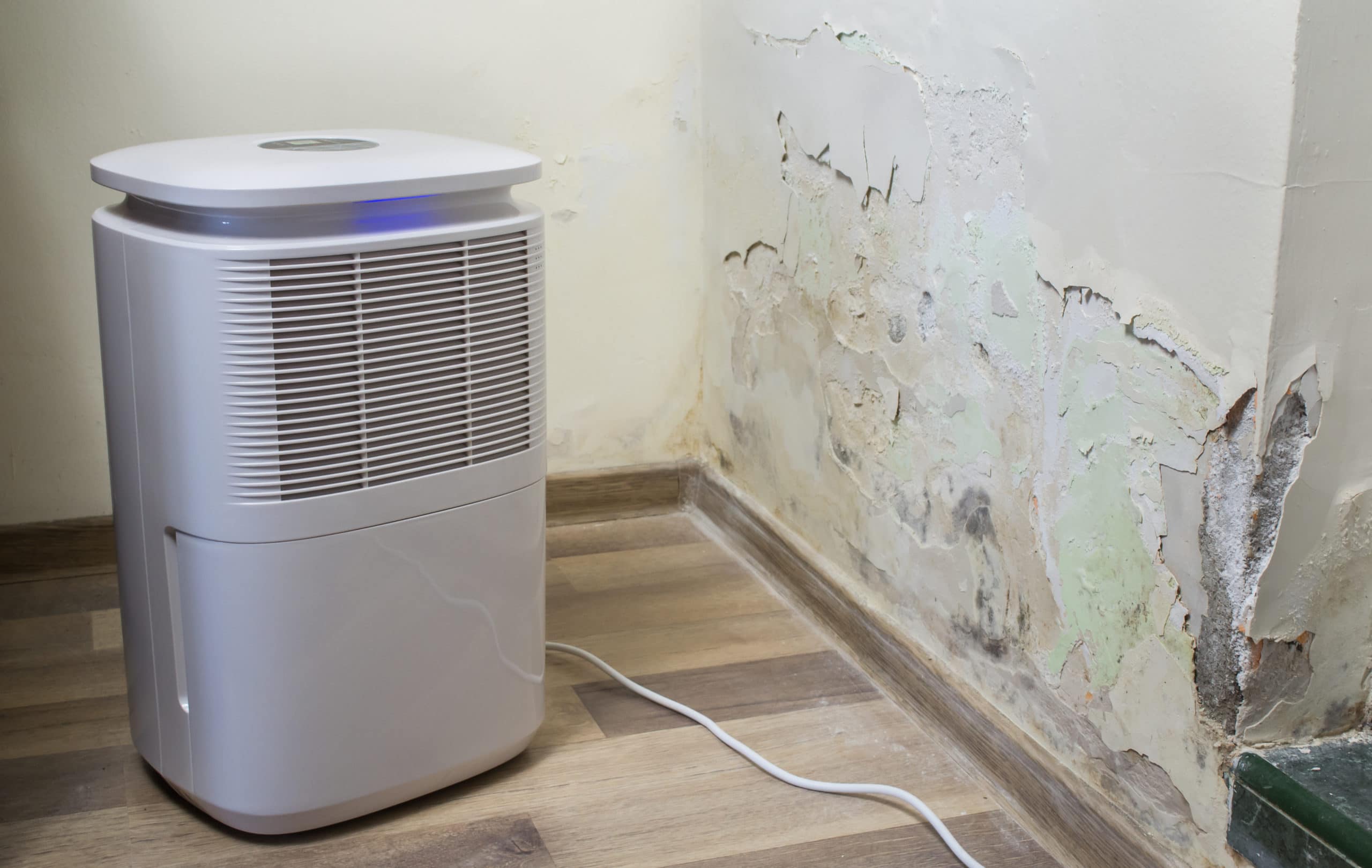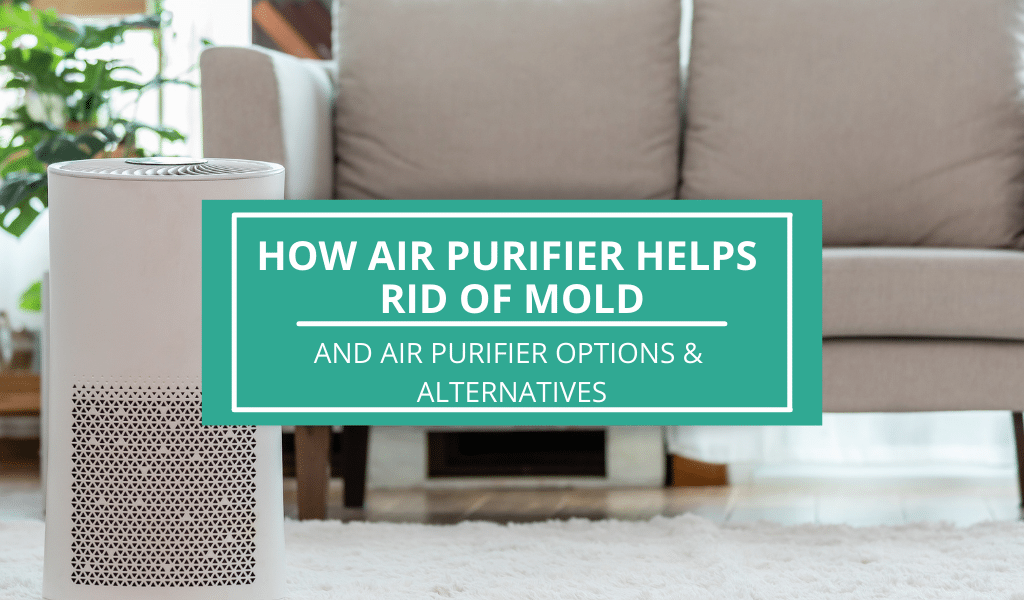We’ve all seen them. Lurking in secluded dark corners, eaves, or at the back of a cupboard. These fluffy, and sometimes furry patches spell one thing: mold. At first glance a small patch of mold seems like it’s nothing to worry about, but even the smallest speck of mold can grow to an inconvenient and expensive infestation.
Mold signals potential underlying construction or maintenance problems. But the consequences of it is even worse. Mold can pose serious health hazards. Breathing in the mold spores can exasperate allergies, trigger asthma attacks and impact other respiratory issues. That is why, treating mold should be a priority.
Although there are a number of ways to remedy the consequences of mold, in this article we'll discuss one particular tool; air purifiers. This one has gained popularity in the recent years. Homeowners with a mold problem use air purifiers in the hopes that they will absolve the its associated health risks. But is it really an effective solution? Let's read on to find out.
Do Air Purifiers Really Help
Yes, purifiers remove harmful particles from the air in a room, in turn giving you clean and fresh air to breath. And this means that many purifiers do have the capability to remove the harmful spores injected into the air by mold. This is especially true when using a purpose-built mold spore air purifier equipped with a HEPA (high-efficiency particulate air) filter.
NOTE - However, it is important to recognize that removing the spores through an air filter will not entirely stop you from breathing in harmful spores.
As long as the mold, the source of the spores, exists within any given part of the house, there will be a latent number of spores still causing potential harm to those who breath them in.
Thus, while an air purifier may help to reduce the effect of mold on air quality, it doesn’t solve the problem. Instead, it functions as a palliative solution, reducing the risks without solving the problem itself.
In such a way, while air purifiers can be used in the short term it is advisable to get to the root of your mold problem as quickly as possible, to ensure the air can be free from harmful mold spores.
Why You Should Be Concerned About Mold
While the answer above may be enough for some to purchase an air purifier and forget about the root cause of the problem, we can’t stress enough how important it is to remove the mold.
As attested by health professionals worldwide, mold can have serious implications on the respiratory health. Individuals who commonly breath in spores are more likely to develop respiratory problems, experience respiratory infections and have flare ups of allergic reactions and/or asthma. Not only this, but these spores are especially harmful to certain individuals:
Such individuals should stay away from any exposure to mold. In fact, research has found that 11% of child deaths are caused by respiratory conditions, some of which can be caused or exacerbated by breathing in mold spores.
Source: Royal College of Paediatrics and Child Health, “Why Children Die: Death in Infants, Children and Young People in the UK Part A”
How Mold Causes These Health Risks?
While awareness of these health risks is vital, it’s important to understand exactly how mold affects the body. Generally speaking, mold spores contain allergens (substances which can cause allergic reactions), irritants and occasionally even toxic substances. Because of this, inhaling, or even coming into contact with, these spores can cause allergic reactions and irritation both on the skin and within the body.
As Mold spores can stay in the air for up to 48 hours, it is incredibly important to ensure that spores, and their source, is dealt with as soon as possible to reduce possible harm to those breathing in the vicinity.
Where Mold Grows
Mold is a type of fungus which is found in areas with high temperature and high humidity. When it exists outside the home, mold works wonders as a decomposition agent breaking down dead flora and fauna. While this is fantastic for ecology, it’s not so great when it finds its way into your home.
Mold makes its way into your home in the form of spores floating in the air. When these spores find their way onto a suitable surface, and are left unchecked, they turn into nasty mold patches. Your best bet to find where the mold is in your house is to check places that meets these 4 conditions:
leak, a bathroom or a dark, damp basement. Another common location, most often left unchecked, is within air conditioning (AC) units. AC units sinisterly act as the perfect incubator for mold. This is due to the evaporative coils used in ACs, which absorbs heat, condenses water and exists hidden within the darkness of the unit. This gives the unit all the prerequisites for producing an abundance of mold. Worse still, as it’s the AC’s job to circulate air, it also can launch these spores into circulation at an alarming rate.
As such, if you have an AC unit, it is worth checking and cleaning the inside of the unit regularly, especially in the warmer months.
Source: Wilson Web Physics, “Truth About Mold”
The Types of Mold Found at Home

Mold, sometimes generically called mildew, is an incredibly broad term describing a variety of microorganisms which grow in the conditions we mentioned above. However, we can categorize the majority of molds into three categories:
Fortunately, once you have discovered the source of mold each of these three types are dealt with in the same way: through an effective fungicide. That said, it is worth understanding which category any mold you encounter may be in, to be able to assess the severity of the health concern.
Let’s run down a few of the key types of mold which you may encounter.
Stachybotrys (Black Mold)
Appearance: | Type of Mold: |
|---|---|
Black | Toxigenic |
The dreaded black mold has a formidable reputation for a reason. This toxigenic mold is incredibly dangerous, signaling incredibly poor indoor air quality. In fact, the mold is considered so dangerous that it should only be removed by licensed specialists.
Black mold commonly grows on walls or in ventilation systems exposed to too much moisture. It is also commonly associated with sick building syndrome—a condition where people in a building suffer from symptoms of illness or chronic disease due to a building they work or reside within.
It goes without saying, that on first sight of the dreaded black mold, you need to get to the root of the problem, quickly.
Chaetomium
Appearance: | Type of Mold: |
|---|---|
Fuzzy white, darkening over time | Allergenic |
This common mold is naturally found outdoors amongst soil and plant debris but can become a common mold in houses damaged by large water leaks or flooding.
Starting out as a fuzzy white and slowly darkening over time, Chaetomium is an allergenic mold which should be dealt with whenever found.
Trichoderma
Appearance: | Type of Mold: |
|---|---|
Green or Yellow | Toxigenic |
This family of mold species is among the most common found in houses around the world. It can grow anywhere given the right balance of moisture, organic matter and darkness.
Given that it is a toxigenic mold, it is of immediate concern if uncovered within your dwelling. Specifically, the toxins it produces are mycotoxins which are capable of causing disease and even death in humans and other animals.
Alternaria
Appearance: | Type of Mold: |
|---|---|
Brown | Allergenic |
Alternaria is an incredibly common type of house mold most commonly found in and around bathrooms or windows. It is, by far, the most common type of allergenic mold in households globally. It thrives in excessively damp and humid conditions.
As an allergenic mold, Alternaria can trigger allergic reactions in individuals while also posing a potential threat to those with impeded immune systems.
Aspergillus
Appearance: | Type of Mold: |
|---|---|
Various | Pathogenic |
Found in buildings, and especially in AC, heating and ventilation systems, Aspergillus may be non-toxic, but it has the potential to cause serious respiratory issues in those with weakened immune systems.
While it is rare for healthy individuals to develop serious illness from inhaling aspergillus spores, the fungus can cause aspergillosis in those predisposed. This includes symptoms such as shortness of breath, severe coughing, wheezing, high temperatures and weight loss.
Thus, it goes without saying that Aspergillus is certainly not a type of mold you should put up with for very long, so if you encounter it be sure to remove the source as soon as possible.
Source: EPA and Berkeley National Laboratory (2007)
While there are a whole plethora of molds which may occur in your house, these are five of the most common types to be aware of.
6 Types Of Air Purifiers To Choose From

If you are searching for an air purifier to keep your air clean, there are a number of different types which each approach the problem from a different angle. Let’s take a look at the key types.
HEPA Air Purifier
The reigning champion of all air purifiers, HEPA (high-efficiency particulate air) purifiers are safe, proven technologies which have been in use since the 1940s.
These purifiers filter airborne particles without producing any harmful biproducts, instead trapping at least 99.97% of particulate matter equal to or greater than 0.3 micro-meters. These strict regulations, enforced by a number of regulatory bodies, ensure that HEPA filters are the most effective type of air purifier available on the market.
In brief, HEPA purifiers work by using an inner fan to pull in particulate matter, trapping it in a weaving of fiberglass, before redistributing the clean air.
HEPA purifiers are ideal for targeting mold particles.
Activated Carbon Air Purifier
An older technology, activated carbon air purifiers are made of compressed carbon equipped with thousands of molecular-sized pores. These filters are incredibly absorbent, allowing them to draw in smoke, chemical gas and odor particles which may pass through HEPA filters.
However, while carbon filters are excellent at capturing smoke and odor, they are not capable of capturing many dust, mold or pollen particles.
This means you will not want to get an activated carbon air purifier to combat mold.
UV Air Purifier
These air purifiers use ultraviolet (UV) light to eradicate harmful germs, bacteria and viruses. They are commonly used in hospitals across an array of medical devices.
While these filters function as effective ways to disinfect surfaces and the air, they take a considerably longer time to produce effective results. Furthermore, without a filtration system (like a HEPA filter), particles may evade the UV light, rendering it ineffective.
As such, you should only consider a UV filter as an add-on to an effective capture system, such as a HEPA air purifier.
Ionic Air Purifier
Utilizing a high voltage generator to give molecules in the air an electric charge, causing them to fall, Ionic air purifiers take on a very unique approach to the problem. This works as it forces the airborne pollutants to bond with opposingly charged particles, causing them to gain weight and quite literally fall to the floor.
While this will remove the particles from the breathable air, it doesn’t remove the problem entirely, instead depositing the particles on the floor. This means that if the purifier is ever turned off these particles can easily be disturbed back into the air.
As such, we would still recommend a HEPA filter as a better alternative.
Ozone Generators
This type of air purifier should be avoided at all costs as it has never gained approval from health professionals or government agencies. It is well known for exacerbating respiratory issues and causing lasting damage to the lungs.
As such, having an ozone generator may be as bad as having mold in your home!
Dehumidifier
Beyond air purifiers, dehumidifiers can help to reduce the overall humidity in an environment. This can help prevent the build-up of mold, especially in areas of known high humidity—such as a damp basement.
Thus, dehumidifiers can act as a preventative measure reducing the likelihood of mold appearing in a given environment.
Final Thoughts
Mold is dangerous. It can not only cause issues to your home, or building, but it can also lead to serious acute and chronic health issues. Thus, it’s important to act quickly whenever you encounter mold.
Air purifiers, particularly HEPA air purifiers, are an effective way to remove mold spores from the air. In turn, providing a safer environment for individuals to breath in the presence of mold.
However, an air purifier will never solve the problem of mold. As long as they exist, patches of mold will continue to grow and release harmful spores into the air. Thus, it’s incredibly important to deal with the source of the mold as soon as possible.
To deal with the mold, it is worth uncovering what species of mold you are dealing with. This is because more dangerous toxigenic species, such as black mold, should only be removed by professionals in order to reduce the spread of toxic spores.
Equipped with all this information, next time you uncover some mold indoors you know what to do. Deal with the source of the mold as soon as possible, and don’t simply cover up the issue with a temporary solution such as an air purifier.

